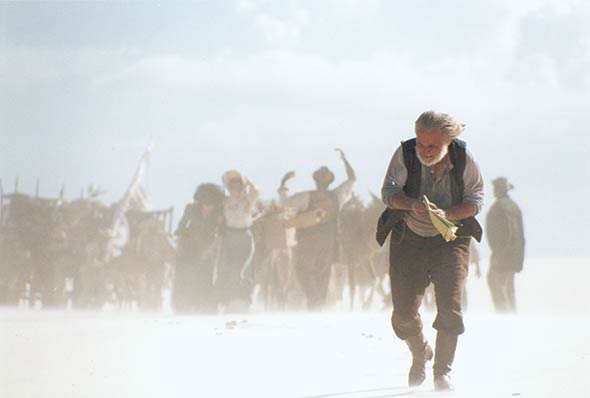
Text by Hanna Eves
National film industries ebb and flow, and when they flow, critics inevitably start bandying about the phrase “new wave.” In recent years, there has been a tremendous resurgence of successful filmmaking in Brazil, causing many to sit up and take notice. For example, Carlos Diegues’ God is Brazilian (2003) took the recent Brazilian box office record. Then a few weeks later, he and his film were edged out by another veteran director, Hector Babenco and his film Carandiru (2003), which locally trumped several Hollywood blockbusters. Last year, director Breno Silveira’s Two Sons of Francisco became the highest grossing Brazilian film of the last 25 years. Add to this growing list the acclaimed careers of Brazilians Walter Salles (Central Station, The Motorcycle Diaries) and Fernando Meirelles (City of God, The Constant Gardener), and it becomes clear that something exciting is brewing far, far south of the border.
It’s not a set movement with a clear agenda like Brazil’s original Cinema Novo, led in the ’60s by the gritty realism of Glauber Rocha, who remains a touchstone today. It’s more a state of cinema where films are actually getting made, as opposed to the bleak death knell that sounded firmly when, as part of a disastrous set of nationwide “reforms,” President Fernando Collor de Mello disbanded government tax programs and the state-sponsored production arm Embrafilme in 1990.
“From 1990 to 1995, we made almost no films. It was really bad,” says Andrucha Waddington during the recently concluded San Francisco International Film Festival, which he attended with his new film House of Sand. “But in the early ’90s, they created this audiovisual law and now there are three laws that make it possible for us. Now we are making almost 50 feature films per year.”
In addition to being an accomplished director, Waddington is co-founder of Brazil’s largest production company, Conspiração Filmes. With studio partnerships, the company is responsible for Two Sons of Francisco – directed by Silveira, Waddington’s occasional cinematographer – as well as Waddington’s own films. “It’s 10 directors, five producers and an investment bank that owns 25 percent of the company,” says Waddington. “So it’s a group of people that have this house of creativity where we make our projects possible. We do around 200 commercials per year. We also do two features plus TV documentaries, TV series and music videos. It’s a place where everybody is working together and helping each other.”
Waddington believes government support of Brazil’s film industry is an essential step on their path to eventual self-sufficiency. “This is something that the Americans did in the beginning to establish the industry. There was an idea that, where the American films would be played, the American way of life would be seen and American products would be sold. Now you have an established industry in America. My film goes on the same screens as Star Wars. The only way to be able to share the screens is to have a vision from the government that is something strategic, to create an identity of the country, an established industry that can walk by itself in 30 years. Not less than that.”
Such a varied and large output of films fosters the possibility for innovative talent to surface. “With 50 films per year you can find 10 very good films,” he says. “I think the possibility is there to produce great new talents, new directors, new actors, new screenwriters. It’s very healthy that we are not only driven by market. It keeps fresh the possibility to make any kind of film.”
Though the plot of House of Sand could almost be taken from an epic western of the ’50s, it’s a safe but sad bet that such a film would have had trouble finding backing in the commercial environment of the United States. Waddington took Hiroshi Teshigahara’s Woman in the Dunes and Luis Buñuel’s The Exterminating Angel as inspirations for this multigenerational story of three women who must learn to stop fighting the sand and wilderness of their adopted home in Brazil’s remote northern desert. Left alone when her husband dies, Áurea (Fernanda Torres) and her mother (played by Torres’ actual mother Fernanda Montenegro) are taken in by a colony of runaway slaves (a quilombo) which has crafted its own society away from civilization. Set over a 60-year span in four time periods – all of which are dictated by momentous occurrences in the sky – House of Sand is a centered, stirring film about acceptance and growing old.
It’s the kind of film that Waddington believes he saw more of in the past. “It’s part of an earlier history that plays without underestimating the audience, making the audience think. Sometimes, if you are only market-driven, you would kill this outline before it even becomes a script. I will be very happy if House of Sand does well because it will prove that there is space for this kind of movie here.”

